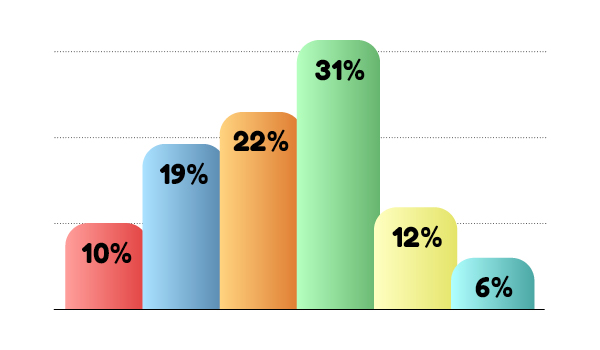Spiral Dynamics is a developmental theory that describes how individuals, societies, and cultures evolve over time. It was developed by Don Beck and Chris Cowan in the 1990s and is based on the work of psychologist Clare Graves. Spiral Dynamics uses a colour-coded model to represent different stages of development and describes the values, beliefs, and behaviours associated with each stage.
Discover the colours of your consciousness.



What is Spiral Dynamics?
Spiral Dynamics is a developmental model that describes how people’s values and beliefs change over time in response to their environment and experiences, from basic survival instincts to complex systems thinking. It uses colours to represent different stages of human development and describes the values, beliefs and behaviours associated with each stage.
It’s a fascinating framework that can help you gain insight into yourself, and understand others even when they have wildly different beliefs to your own.

How can Spiral Dynamics transform your life? 



Improve your understanding of people
Do you struggle to understand people when they have completely different beliefs than you?
- Understand the values, beliefs and behaviours of others
- Gain insight into why people think and act the way they do
- Build stronger relationships
- Improve communication by understanding where someone is coming from
- Enhance leadership and understand the needs and motivations of team members
Enhance your self-awareness
Understanding the Spiral Dynamics model can also lead to increased self-awareness.
- By understanding your own values and beliefs you can better understand your own motivations, strengths and weaknesses
- Communicate more effectively
- Lead with greater empathy
- Make more informed decisions
- Leads to greater insight and personal growth


Explore the depth of human consciousness
Spiral Dynamics provides a powerful lens through which to view the world.
- Spiral Dynamics is a thought-provoking model that provides a roadmap for understanding the predictable stages of human development and the corresponding worldviews associated with each stage
- Gain a new perspective on the world and yourself
Explore the stages of Spiral Dynamics

Red
Egocentric and
Self-indulgent Stage
- Power-driven impulses
- Ego-centric worldview
- Fear based decisions
- Aggressive behaviour
- Domination & control
- Short-term focus

Blue
Rules and
Meaning Stage
- Traditional values
- Hierarchical structure
- Values stability
- Conformity expected
- Nationalistic worldview
- Strong moral code

Orange
Science and
Success Stage
- Achievement oriented
- Rational and analytical
- Materialistic worldview
- Strategic thinking
- Individualistic focus
- Entrepreneurial spirit

Green
Emotional, Spiritual
and Cause Stage
- Equality & inclusion
- Community mindset
- Empathetic thinking
- Growth & Spirituality
- Consensus decisions
- Social justice

Yellow
Systemic and
Relativistic Stage
- Integrative complexity
- Systems thinking
- Flexibility and adaptability
- Embracing paradox
- Concern for humanity
- Open minded

Turquoise
Global and
Holistic Stage
- Holistic thinking
- Intuitive knowledge
- Interconnectedness
- Global perspective
- Self-actualisation
- Evolutionary vision
Spiral Dynamics
Spiral Dynamics
Spiral Dynamics
Spiral Dynamics
Spiral Dynamics
Frequently asked questions
As an individual, is it better to be higher up on the spiral?
It is important to understand that each stage of the Spiral Dynamics model has its own strengths and limitations. While being at a higher stage may indicate a more complex and nuanced understanding of the world, it does not mean that individuals at that stage are better or more evolved than those at lower stages.
Furthermore, individuals may exhibit different stage preferences depending on the context and the challenges they are facing. For example, in a crisis situation, individuals may revert to a lower stage to prioritise survival and security over more complex values such as creativity and innovation.
Ultimately, the goal of Spiral Dynamics is not to judge individuals or communities based on their stage of development, but rather to understand and appreciate the diversity of values and perspectives that exist in the world. By recognising and respecting these differences, individuals and organisations can work together more effectively to achieve their goals and promote positive social change.
How do individuals move through the stages?
Individuals move through the stages in Spiral Dynamics as they encounter new challenges and opportunities in their lives. When individuals encounter new and more complex challenges, they may need to adopt new ways of thinking and behaving to meet those challenges. This can leave to a shift in their worldview and a movement to a higher stage in the model.
How can I personally move up the stages of Spiral Dynamics
If you feel like you would like to move up the Spiral Dynamics stages, you must first become aware of the limitations and assumptions of our current stage of development. This can involve questioning our own beliefs and assumptions, seeking out new perspectives and experiences, and learning from others who are at higher stages of development.
Individuals can also work to develop the skills and capabilities associated with higher stages of development, such as critical thinking, empathy, and collaboration. This may involve engaging in activities such as meditation, self-reflection, and learning new skills and knowledge. The key is to maintain a growth mindset, stay open to new experiences and perspectives, and be willing to adapt and change as needed.
Can I skip any of the stages of Spiral Dynamics?
Moving up the stages in Spiral Dynamics is a gradual and ongoing process that occurs as we encounter new challenges and opportunities in our lives. Each stage builds upon the previous stage, so it is not possible to skip stages.




